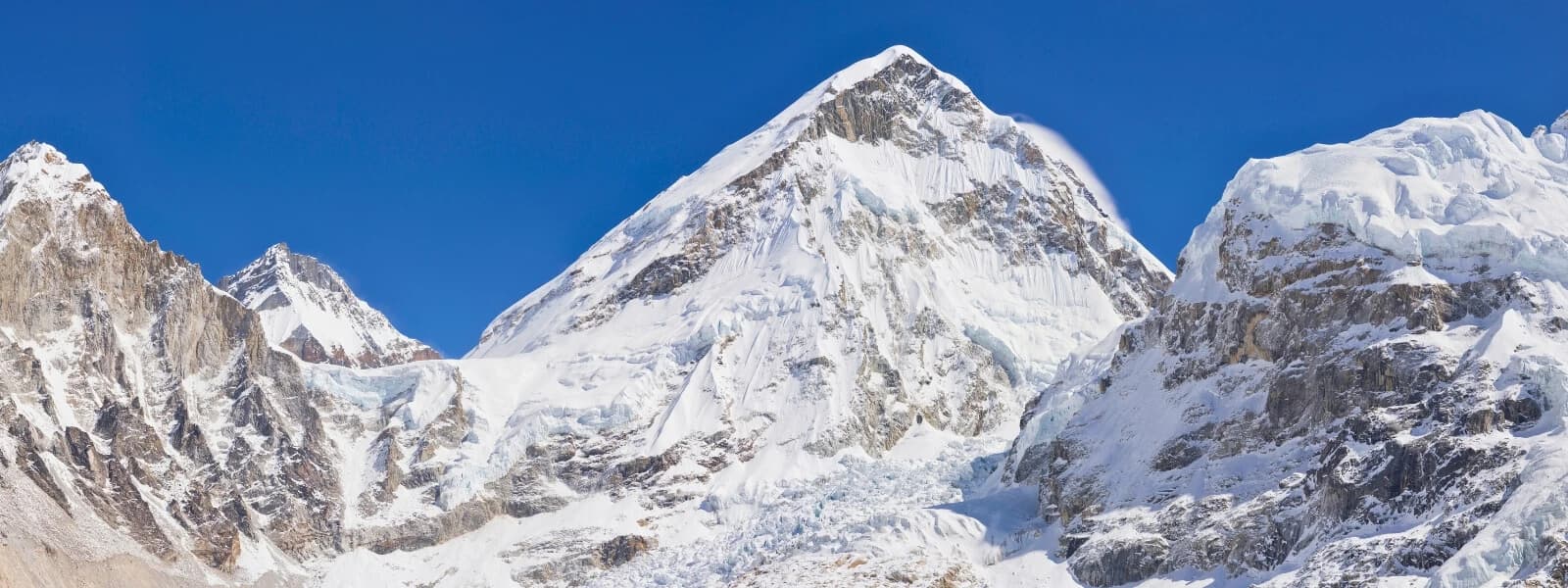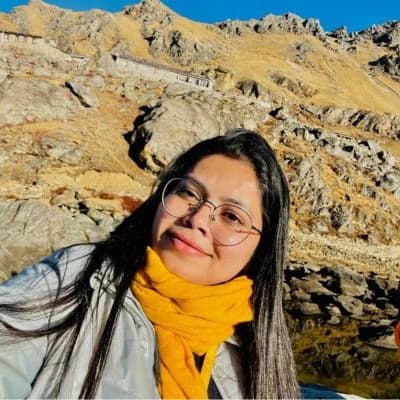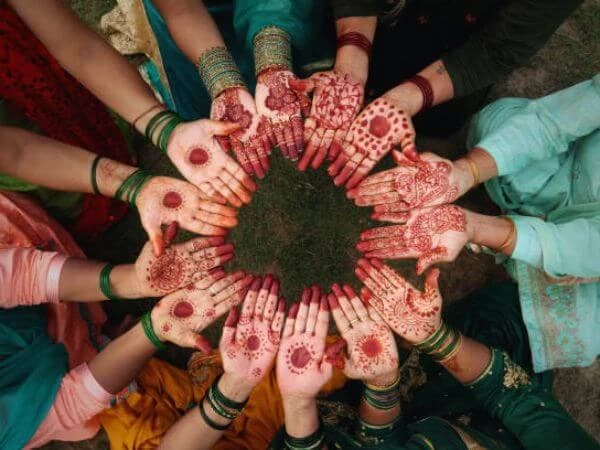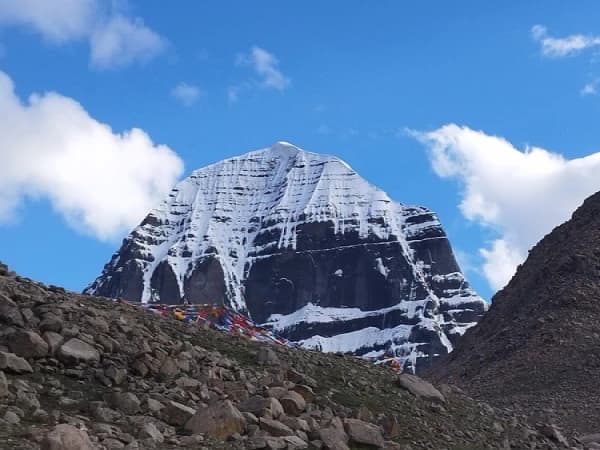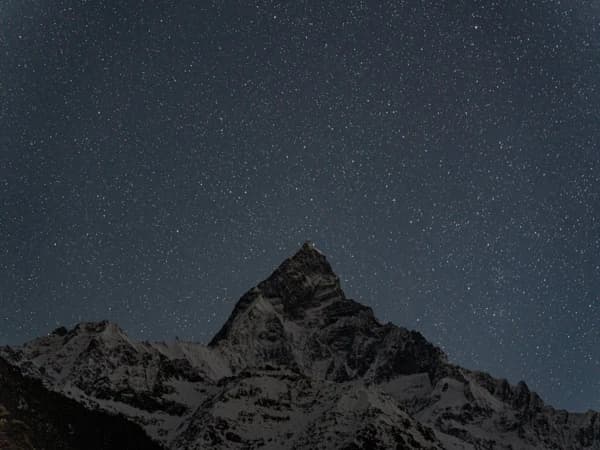The Everest Panorama Trek is an easy and adventurous trek to the lower region of the Everest Base Camp. The valuable part of this trek is that you get to witness the breathtaking view of Mt. Everest (8,848 m), skipping long and exhausting trekking days.
Everest Panorama Trek From Kathmandu
Mount Everest Panorama Trek
The Everest Panorama Trek is an easy and adventurous trek to the lower region of the Everest Base Camp. The trek is designed with a 7 to 9 days itinerary offering the scenic beauty of the mountainous region. The valuable part of this trek is that you get to witness the breathtaking view of Mt. Everest (8,848 m), skipping long and exhausting trekking days.

Everest Panorama Trek Fitness Level
The trekking trail is a perfect blend of exciting ventures and pleasant walking in the Everest region. This trek is befitting for all age groups with average physical fitness. No prior trekking experience is necessary for the Everest Panorama trek.
Everest Trek Route
The trail leads you through the most desired routes offering nature’s splendid beauty. You come across different wild animals and vegetation species through the lush green forests. Along with that, the trail lets you visit several villages of the Sherpa community. The eyecatching view of Mt. Everest, Ama Dablam, Lhotse, Nuptse, Cho Oyu, and plenty of other mountains along the trek is worthwhile.
Everest View Short Trek
The short trek for the Everest Panorama begins with a scenic flight to Lukla from Kathmandu. Here onwards, the trekking journey advances to the famous Sherpa town in the Everest region, Namche Bazaar. The trekking routes guide you to the charming Tengboche monastery along with the village of Khumjung, Kunde, and Monjo.
How To Trek Everest Base Camp
The Everest Panorama trek is worth a try. The short trek to Everest is of a minimum 7 days itinerary. Trekking through stony routes, crossing several suspension bridges, indulging in the culture of the lively Sherpa community, and whatnot. The journey from the start to the end is beyond your expectations. The memories you capture along the trek are precious to cherish for life.
Everest View Trek Facts
Destination: Nepal
Starting point: Kathmandu
Ending point: Kathmandu
Trekking Duration: 7 to 9 days
Best Season: Spring and Autumn
Region: Khumbu Region
Difficulty: Moderate
Accommodation: Teahouses
Modes of Transportation: Jeeps and Flight
Trek Highlights
- One of the easy treks to the lower part of the Everest Base Camp.
- Flight to Lukla with an aerial perspective view of mountain ranges.
- Visit the famous Sherpa town of Namche Bazaar.
- Come across an amusing Tibetan monastery - Tengboche Monastery.
- Explore the wilderness of the Sagarmatha National Park.
- Picturesque view of Mt. Everest, Ama Dablam, Makalu, Lhotse, and other peaks.
- Encounter friendly Sherpa people in the lively Khumjung village.
- Witness mountain goats, yaks, and musk deer along the trek.
Necessary Permits Required For Everest Panorama Trek
Permits are required while trekking into the trails of the Everest region. The following permits are essential for the Everest Panorama trek.
- Trekker’s Information management System (TIMS)
A TIMS card is a fundamental permit for trekkings in Nepal. It costs USD 10 per person. You can apply for the permit at the Nepal Tourism Board Office in Kathmandu.
- Sagarmatha National Park Permit
Sagarmatha National Park permit is a must while joining the trekking trails to the Everest region. It costs USD 30 per person. This permit can be obtained in Monjo during the trek. A passport is required to apply for the permit.
Travel agencies provide you with all the required permits if you are planning to trek based on their trekking packages. Passport size photos and passports are necessary to apply for the permit.
Everest Panorama Trek Route
The initiation of the Everest Panorama journey begins with a 30 minutes scenic flight to Tenzing Hilary Airport in Lukla (2,800 m). Lukla is the starting point for the treks in the Everest region. The trek begins shortly after arriving in Lukla. On this day, the trekking route leads you to Phakding for an overnight stay.
The trek begins the next morning at Namche Bazaar. It is the Sherpa town in the Everest region. The town is the administrative hub with trading facilities in the region. An acclimatization day is scheduled at Namche before heading to higher altitudes. On this day there will be a short hike to Everest View Hotel and an exploration of the Sherpa museum and Everest gallery. The trek advances to Tengboche with majestic sights of mountain ranges on the very next day.
On continuing the trek, the trail follows the route through the pine forest leading to Khumjung village and thus reaches Kunde for an overnight stay. The next morning, the trek follows through yak farm with a spectacular view of the Himalayas down to Namche and arrives in Monjo village. Moving further, it’ll be the last trek with a pleasant hike back to Lukla. The Everest Panorama trek concludes after the flight to Kathmandu from Lukla.
Accommodation and Meals During Everest Panorama Trek
The Everest region is the desired trekking destination in Nepal. Tourists from different nations sign up for the Everest Panorama trek to observe the enchanting view of Mt. Everest. Consequently, the trekking trail offers tea houses and lodges for accommodation.
A tea house is accommodation along the trek. Hotels providing private rooms are available up until Namche Bazaar. The rooms are based on a twin-sharing basis. As you trek beyond Namche, tea houses are available for your stay. The cost can vary depending upon the amenities. The facilities provided by the tea houses get scarce as you gain higher altitudes with insufficient services. Tea houses are well equipped with electricity, warm blankets, and pillow, western toilets, hot showers, etc.
Foods along the trek are quite good provided with three meals; breakfast, lunch, and dinner. The price gets expensive as you gain higher altitudes. Generally, typical Nepali cuisine (Daal, Bhat, and Tarkari) are served as lunch and dinner throughout the trek. Likewise, corn flakes, oatmeal, butter, jam, boiled eggs, etc. are breakfast meals.
How Difficult Is The Everest Panorama Trek?
The trekking trails for the Everest Panorama is a moderate trek. Anyone who is determined can venture into this trek without any trekking experience. The trekking routes are designed by professionals in such a way that all age groups can participate. Usually, the trekking duration is about 5-6 hours on average. However, the trek from Tengboche to Mongo requires 7-8 hours of trek. Anyone with ordinary physical fitness can sign up for the Everest Panorama trek.
Best Season For Everest Panorama Trek
Traveling during favorable season help you with the convenient trekkings in the mountains. Autumn and spring provide the best weather and climate for trekkings in the mountain regions. A large number of mountaineers and trekkers increases during the peak season in the Everest region.
Autumn (September to November)
Autumn is basically the most promising season for the treks. It is the peak trekking season. The climate is appropriate with stable and fair weather. Consequently, the visibility becomes clearer providing magnificent views of mountain ranges. During autumn, the trail lacks blooming vegetation.
Spring (March to May)
Mountain trekking is suitable during the spring season. The trekking trails in this season are adorned by blooming green vegetation and flowers. The weather is fair with a warm temperature. Glorious mountain views can be seen clearly.
Winter (December to February)
The temperature during winter is extremely cold in higher altitudes. The trekking trails can be challenging due to snowfalls and strong breeze.
Monsoon (June to August)
Monsoon is the off-season for trekking. The season has hot and humid weather. During this season, frequent rainfall makes the trekking route wet and slippery. Rain clouds covering the sky make it difficult to get a clear glimpse of mountain ranges.
Trekking Gears and Equipment Required
You need proper trekking gear and equipment if you are planning to trek in the mountains. So, here is the list of essential gears and equipment that you need during the trek:
- Down jacket
- Sun hat or cap
- UV protection sun hat
- Thermal wears
- Fabric jacket (Wind/waterproof)
- Fleece Jacket
- Fabricated sports bras (for females)
- Thermal bottoms
- Normal pants
- Trousers (Wind/waterproof)
- Trekking pants (soft shell and hard shell)
- Hiking shorts
- Smartwool liner gloves
- Warm socks
- Trekking boots
- Casual shoes
- Gaiters (for extreme cold)
Frequently Asked Questions
How to avoid altitude sickness in the Everest Panorama trek?
You need to follow the things given below to avoid altitude sickness:
- Gradual ascend
- Eat healthily
- Drink 3 liters of water
- Carry first aids and medications
- Acclimatization rest
Are permits essential for the Everest Panorama trek?
Yes, permits are essential for the Everest Panorama trek. Trekker’s Information management System (TIMS) and Sagarmatha National Park permits are required to trek in the Everest region.
Which mountains can be seen during this trek?
The Everest Panorama trek is a short trek to the lower section of the Everest Base Camp. However, the trekking trail comes with a splendid view of mountain giants. Here is the list of mountains that can be seen along the trek:
- Mt. Everest
- Ama Dablam
- Lhotse
- Nuptse
- Kongde
- Island Peak
- Thamserku and many more.
What are the major towns of the Everest region?
The major towns of the Everest region are mentioned under the following points:
What is the highest point in the Everest Panorama trek?
3,840 m The Everest Panorama trek advances up to 3,840 m for the breathtaking mountain views.
Everest Panorama Trek Cost
To know the cost of the Everest panorama trek do contact us through our official email address or do call us at whats app. Beside Everest Panorama Trek you can alao join our fixed departures of different trek packages in the Everest region.


